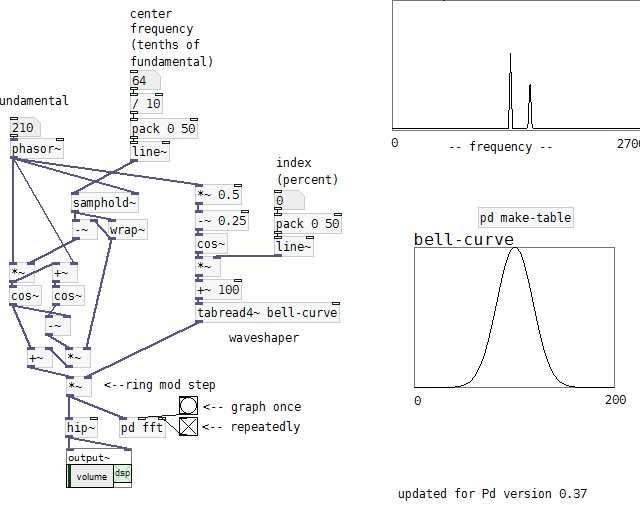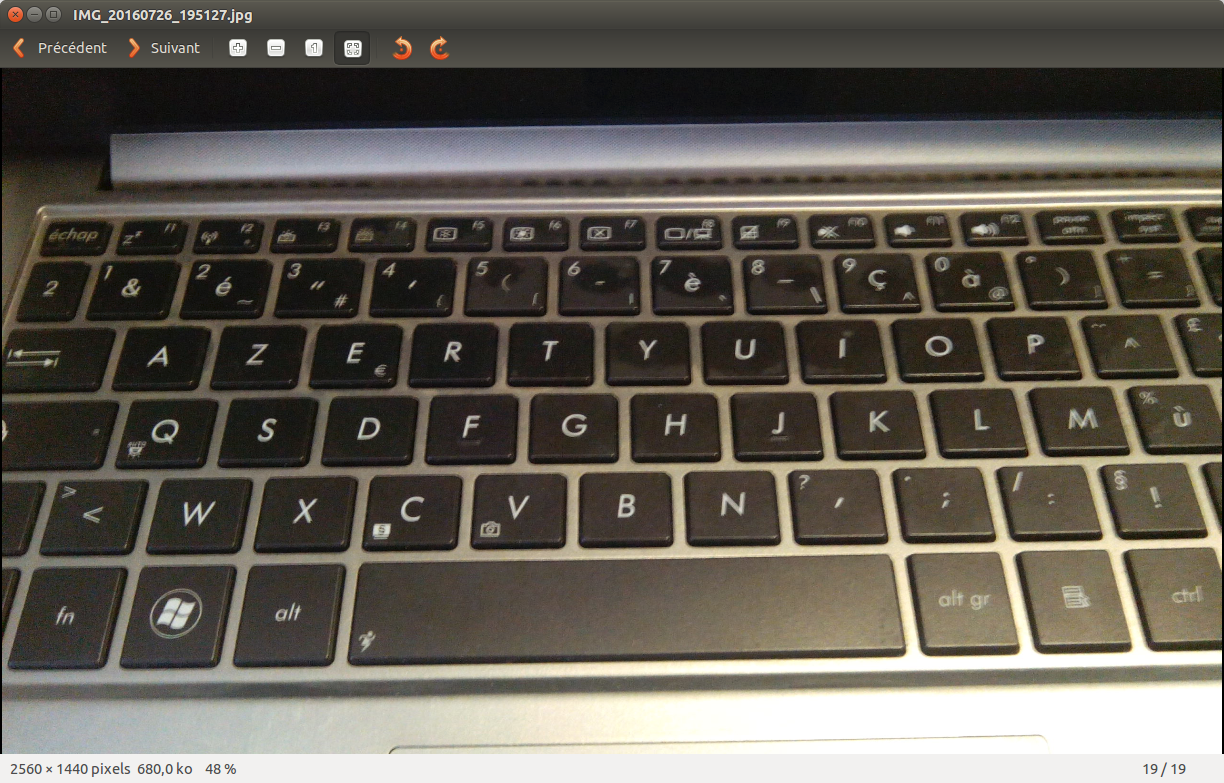-
mx
posted in technical issues • read moreI think the tilde pb has been fixed since pd 0.50-1
True !
on win7 I have tried 0.50-0, wich is the version present in puredata.info, and I had no tilde with my keyboard ;
Then I ve been on Miller's website, and 0.50-2 version works fine !
Really fun to see that Miller's website is still the more appropriate -
mx
posted in news • read morewhere can I find thoses binairies on the git website ?
https://git.purrdata.net/jwilkes/purr-data
so that I can share a link where the last beta releases are downloadable
thx. -
mx
posted in technical issues • read morethx for answering.
Maybe you can also have a look at his paper Formant based audio synthesis using nonlinear
distortionyes its done. it does not really help me since it deals more with math (complex number) explanation
-
mx
posted in technical issues • read morehmm maybe its because Puckette dont use the difference RM and AM ? I dont find AM example in Puckette theory & techniques of electronic music ...
maybe Puckette see the AM as a special case of RM, where the modulator have a DC offset.
-
mx
posted in technical issues • read moreHello all.
PAF synthesis ask me some question.
lets take the example F12.paf.pd
since the modulator (the waveshaper at the right which generate the formant) range from 0 to 1 (unipolar), dont we have to speak about Amplitude Modulation, and not Ring Modulation ?in Curtis Roads "Computer Music Tuto" we see that the Amplitude Mod (AM) is made with a unipolar modulator, whereas Ring Modulation (RM) need a bipolar one. And also that with the AM the partials from the carrier are present, whereas in RM thoses partials are removed so that we get only sidebands.
With the PAF, we see that the partials from the carrier are also present in the resulting signal... then why its name ring mod ?thx.

-
mx
posted in technical issues • read moreI dont really get the section ** 3.4.2.9 Octave doubler** in the pd-tutorial.com ..
If you delay a periodic signal by the half the duration of one period and add it to the original, the fundamental tone (and all odd partials) is cancelled out
- if my signal is a sinusoid the result is a 0 signal ;
- if my signal come from a phasor (like in the example) the result is a sawtooh at the double freq ranging in [0.5 , 1.5] ;
- if my signal come from a natural instrument (e.g. a cello) how do we explain that it will remove the odd partials ?
thx.
-
mx
posted in news • read moreDo you mean you want the "Startup Path" dialog?"
yes, that is the name thx.
Anything out of the ordinary on your computer?
with ctrl + shift + -. Does this apply here?my "-" key is shared with the "6" nb... nothing out of ordinary.
same behavior with ctrl + shift + -
maybe it is my computer if it works on yours. doesnt matter.@LiamG (out of purpose)
Ubuntu with the latest version of Vanilla
do you have a tuto for that ?
does this linux .deb Pd version 0.47-1 compiled for ARMv7/linux (Raspberry Pi version 2; UDOO) (4 Megabytes) present on miller's website will work on Ubuntu 14.04 ?thx.
-
mx
posted in news • read morereally really good work, tanks a lot, happy to have this on my screen
I have 2 questions :- can we said to pd to load personnals abstractions, in a specific location, when he run ?
- for the view menu :
ctl+=works fine, butctl+-did not work surprisingly
shortcut suggestion :
ctl+mouseWheelwould be reallyyyyy greatubuntu 14.4 64 bits
(ctl+- works fine on firefox)
thanks again. -
mx
posted in technical issues • read morewell I used Pd-l2ork version 20160614 too but on ubuntu 14.04LTS.
on my machine the put menu is empty.
also it is present only on the pureData windows, the one named Pure-Data L2ork, and not in the patch window, where I have only a file and edit menu
at the end of my installation I hadlibstk0-dev&libfluidsynth-devdepedencies which were missing, and fivedpkg: error processingerrors.maybe the main pb is that I used pd-l2ork-x86_64-20160614.deb which are for ubuntu 16, whereas I am on ubuntu 14 (there is no .deb for 14
 )
)
thx. -
mx
posted in technical issues • read more@gsagostinho hello, thx for answering. it does not work on my ubuntu 14. with or whithout a numeric pad.
I made a mistake on my precedent post : the shortcuts I used to are the ones you said :
[ctl + shift + &] = {ctl + 1]
[ctl + shift + é] = {ctl + 2]
[ctl + shift + "] = {ctl + 3]
etc... -
mx
posted in technical issues • read morehello,
I just try the pd-l2ork version on ubuntu (http://pd.l2ork.org/)
I am lost because the usual shortcuts [ctl + shift + 1,2,3,4,5] are absents ....
any cues ?also du u know if a documentation in a text format (pdf) about all these new boxes (which are organized whith a color code ) is available ?
thanks.
mx. -
mx
posted in technical issues • read moreI find the syntax explanation in 4.data.structures
""
The filledpolygon's arguments are interior color, border color, border width, and then the points of the polygon. Arguments which are symbols ("q" and "z" in this case) mean to take the values from the data structure. Other values are constant. The position of the object is automatically controlled by fields named "x" and "y".
"" -
mx
posted in technical issues • read moreokay, its clear,
so we don't have to think of frequency domain.thx for your time.
cheers



 it is impossible to copy/paste
it is impossible to copy/paste